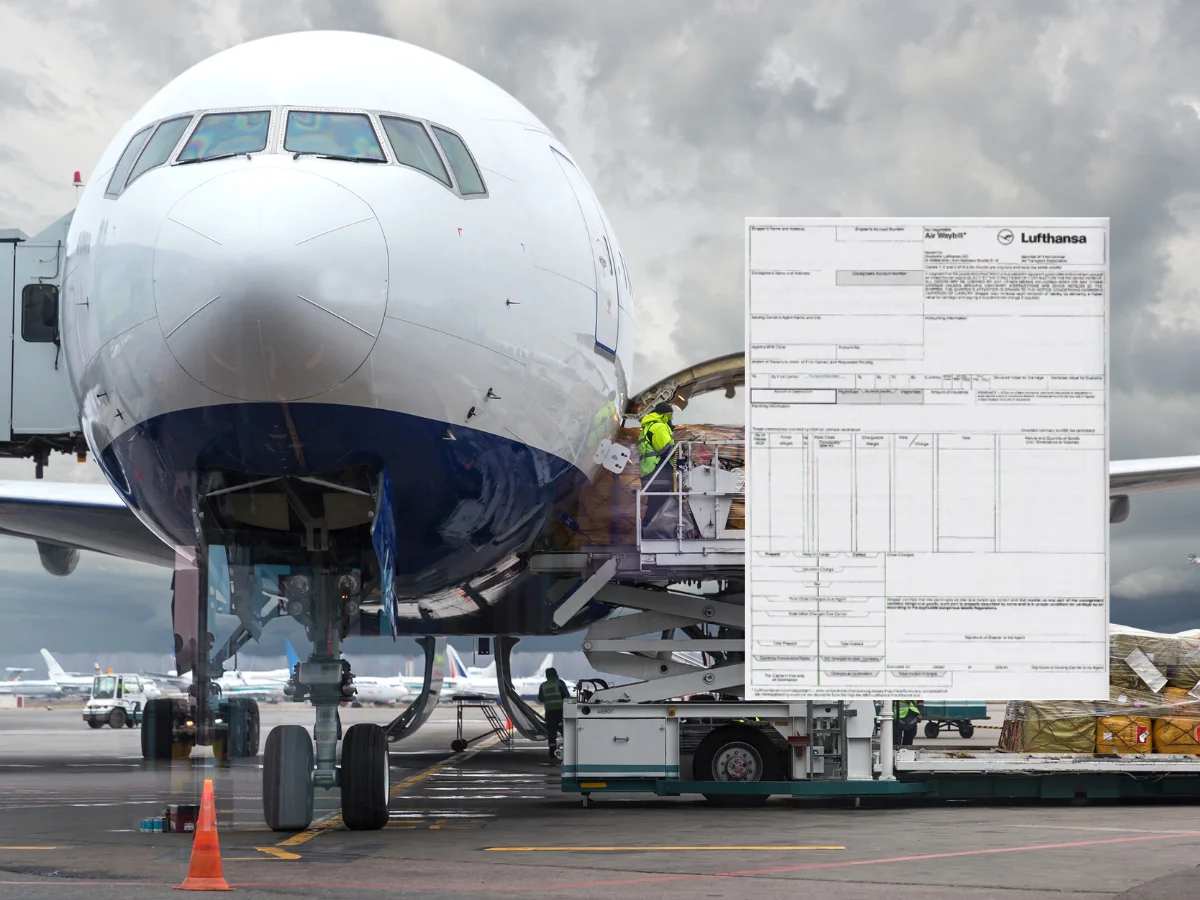An Air Waybill is an Air Waybill (AWB) is a shipping document used in air transport to record the shipment of air cargo, it indicates that the cargo has been accepted for transport. It is a customs document that is necessary for the customs clearance of goods. The front of the document contains information such as the name and address of the shipper and consignee, details of the shipment, the AWB number and instructions for carriage. The reverse side contains information on the air carrier, cargo details and other details of the shipment.
Types of air waybills
There are two types in air waybills.
- MAWB (Master Air Waybill) is a document issued by an air carrier that specifies the conditions of carriage of consolidated consignments bound for the same destination. The freight forwarder, who organises the carriage of goods from different principals to a single destination, acts as shipper in this case. The MAWB is issued on a special form prepared and signed by the air carrier. This document provides the consignee with protection in the event of damage or loss of goods during transport.
- HAWB (House Air Waybill) is a document issued by the forwarding company to the exporter. It is used for consolidated shipments and contains a detailed inventory of these shipments and information on transport costs. The HAWB is drawn up on a standard air waybill form and is signed by the forwarder, without explicitly naming the carrier.
The AWB (Air Waybill) is issued in 3 or 4 copies:
In the waybills issued, we may encounter different coloured documents for different people:
- Green - the original for the carrier.
- Pink - the original intended for the recipient.
- Blue - the original intended for the sender.
- Brown - the document constituting proof of delivery or receipt.
- White - other copies of documents.
What must be on the air waybill?
The air waybill must contain information such as:
- Place and date of issue of the document - location and the exact date when the document was drawn up.
- Sender details - full name or company name, full address and signature of the person or company sending the consignment.
- Carrier details - the name or company name and address of the company responsible for the transport of the goods.
- Place and date of receipt of goods for transport - the location and date when the goods were handed over to the carrier.
- Recipient data - the name and full address of the person or company to whom the consignment is addressed.
- Reference numbers - unique identifiers for the sender and the recipient to facilitate tracking.
- Product specifications:
- the type of goods being transported,
- the way the consignment is packaged,
- number of packages,
- weight in kilograms or pounds,
- dimensions (length, width, height) in centimetres or inches,
- description of the goods including country of manufacture.
- Price of goods - the value of the goods transported.
- Transport costs - charges related to the transport of goods.
- Customs information - all data necessary for customs formalities, especially for international shipments.
- Additional information - any other relevant information in accordance with the terms of the concluded contract or required by the regulations of the courier company.






